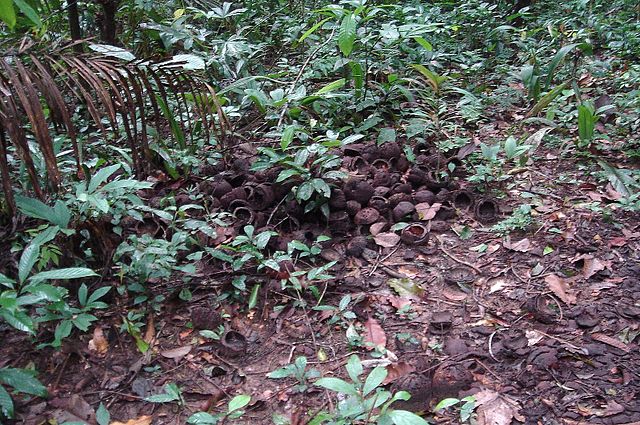
Though the Amazon forest may appear wild and uncharted, a new comprehensive study has revealed that it's actually the result of some of humanity's earliest experiments with farming. People have been living in the Amazon for more than 10,000 years, building some of the greatest civilizations of the ancient world. They also dramatically changed the Amazon forest in ways that are still obvious today.
Wageningen University environmental science researcher Carolina Levis and a large international team of ecologists and archaeologists contributed to a study for Science that is bound to transform our view of the Amazon. "People arrived in the Amazon at least 10,000 years ago, and they started to use the species that were there. And more than 8,000 years ago, they selected some individuals with specific phenotypes that are useful for humans,” Levis told the Atlantic's Robinson Meyer. “They really cultivated and planted these species in their home gardens, in the forests they were managing." These early cultivators were domesticating trees at roughly the same time that Neolithic peoples in the Levant were first domesticating wheat and barley.
Working with data from the Amazon Tree Diversity Network, Levis and her colleagues identified 85 domesticated tree species out of 4,962 species in the Amazon. But these 85 species had an outsized influence on the composition of the forest itself. "We found that 20 of these 85 domesticated species are hyperdominants: five times higher than the number of hyperdominant species expected by chance," they write in Science. Overall, about 20 percent of all species in the Amazon forest today are the result of ancient domestication. In areas where large ancient civilizations existed, the numbers of domestics are closer to 30 percent.
Favored trees of Amazonian people 8,000 years ago included rubber, cocoa, Brazil nut, caimito, acai palm, cashew, and tucuma palm. These trees and others were essential as food and building materials for pre-Columbian societies.
Adding to the evidence that these trees were cultivated and planted by people, researchers found domestics were most abundant around ancient cities identified by archaeologists, as well as along rivers where people lived in villages. Many could also be found in areas where Amazonian peoples had engaged in slash-and-burn techniques for clearing the land. It's possible that these species were the best able to grow in areas that had been disturbed by human habitation. In other words, the density of domestic trees probably resulted from a combination of deliberate farming and species that easily adapted to human environments.
The result is a forest that has been heavily modified by humans for thousands of years. Though ancient city-builders abandoned the forests over a millennium ago and European colonization killed off many remaining Amazonian peoples 500 years ago, these tree farmers left indelible marks on the landscape.
Though the forest has covered over most of the areas where humans once erected great temples, people may still be helping some species become hyperdominant. Speaking with Erin Ross at Nature, University of Amsterdam paleoecologist Crystal McMichael noted that the transformation of the Amazon didn't end after contact with Europe. “It’s quite well known that ancient people and modern people both settle in similar areas," she said. As new people flood into the forests, they are probably keeping the ratio of domestics higher than average.
Scientists have long argued that humans had a role in shaping the Amazon. But what's incredible about Levis and her colleagues' study is that it's a wholesale assessment of the Amazon that incorporates the perspectives of environmental scientists and archaeologists. This cross-disciplinary work has allowed us to understand that a seemingly untouched wilderness is actually a patchwork of farms abandoned centuries ago.
Science, 2017. DOI: 10.1126/science.aal0157
reader comments
60